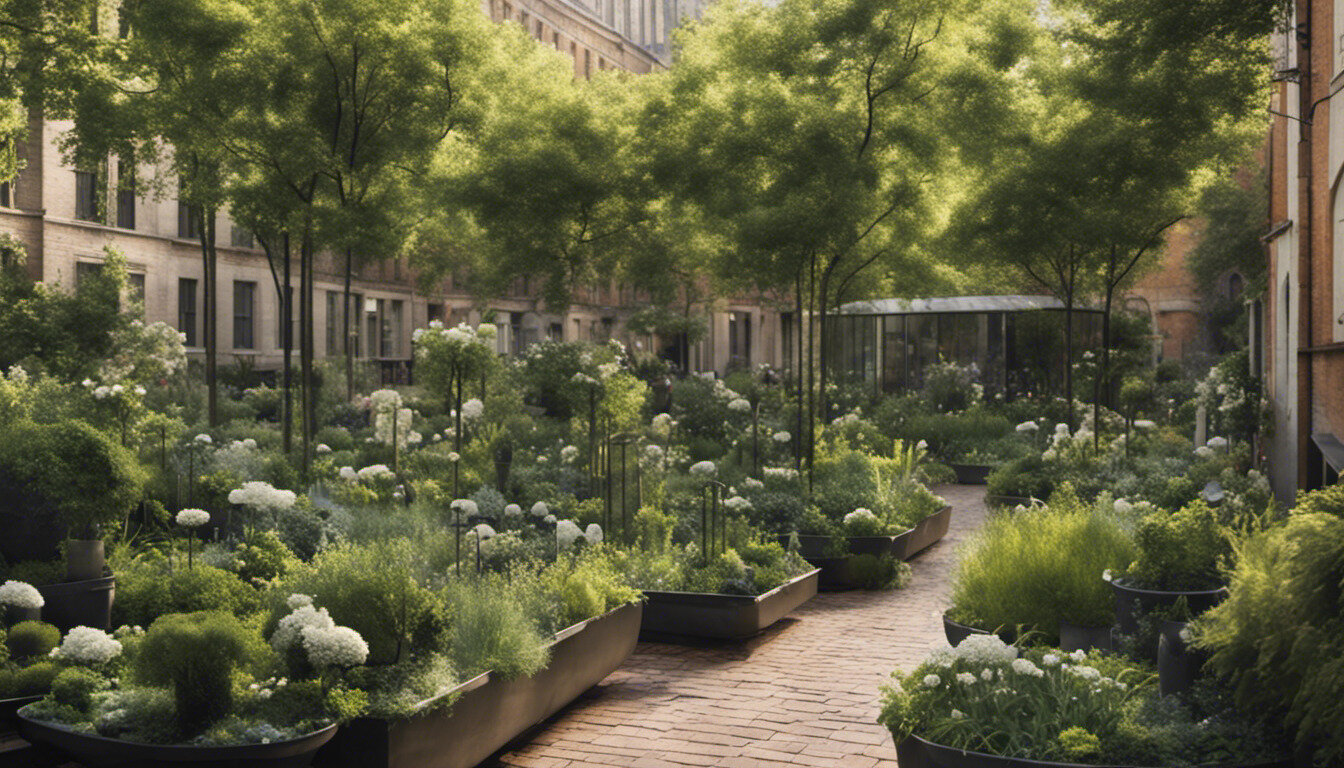The 2-Minute Rule for City Blooming
Table of ContentsFacts About City Blooming RevealedThe Definitive Guide to City BloomingThe Greatest Guide To City BloomingHow City Blooming can Save You Time, Stress, and Money.The Best Strategy To Use For City Blooming
Intrigued in expanding food available for sale in the City of Chicago? Thinking of beginning an area garden? Changes to the Chicago Zoning Ordinance allow farming uses like community yards and metropolitan farms in numerous parts of the city. Below is a listing of regularly asked concerns relating to the rules and regulations that cultivators must think about when planning an urban farming task.
The zoning amendment does not change any various other codes managing composting, structure licenses, buying or leasing City had residential or commercial property, company licenses or environmental contamination. There are existing codes that control these concerns and they stay in full impact and may be relevant to your project. Community yards are normally possessed or taken care of by public entities, public companies or community-based companies and maintained by volunteers.
Urban farms expand food that is meant to be offered, either on a nonprofit or for-profit basis. Due to their industrial function, city ranches need an organization license.
Rumored Buzz on City Blooming
The quantity of compost product can not exceed 25 cubic backyards at any type of given time according to the standards in 7-28-715 of the City's Municipal Code. Because the soil at a lot of new garden websites needs changing, garden compost, dirt, wood chips, or various other products can be acquired to create or enhance the expanding space.

If a building permit is required then the hoophouse will certainly be considered an accessory structure. You can learn even more about the structure authorization requirements by calling the Department of Structures. The 25,000-square-foot size limitation is intended to stop a single area yard from dominating an offered block or detracting from the block's existing domestic or commercial character.
The restriction does not put on yards located in Public Open Area (POS) areas. Can there be greater than one neighborhood yard that is 25,000 square feet on a single block? Yes. The dimension restriction relates to specific yards, not to private blocks. No. Secure fencing is not required, nonetheless, gardens that have huge parking lot may be called for to set up secure fencing or other landscaping attributes.
City Blooming for Beginners
B1 & B2 districts require that all industrial usage tasks be carried out inside your home. R areas restrict commercial task. The regulations reflect the purpose and intent of the Zoning Code. Is fencing needed for metropolitan ranches? Yes. Fences might be called for, together with landscape design and screening, for sure parking locations and exterior job or storage space areas depending upon place and the particular task taking area.
Urban ranches call for structure authorizations and zoning approvals prior to building (balcony and patio garden design). Other forms of city review may be called for depending on details frameworks, tasks, dimension, landscaping, licensing, public heath and stormwater administration problems.
The Department of Business Matters and Customer Security can help determine the certain kind of organization certificate that's required. Off road car parking is required for the majority of business jobs in Chicago. The called for number of car park spaces is based on the number of employees working on site and not the square footage of the growing area.
4 Simple Techniques For City Blooming
:max_bytes(150000):strip_icc()/womanonrooftopurbangarden-7fffbb3897ac48f390d94b9545d4d082.jpg)
Yes. A city ranch can offer garden compost material created on website, however, the operation has to follow the laws in 7-28-715 of the Chicago Municipal Code. Yes. Aquaponic systems are enabled inside on metropolitan ranches in many zoning areas. However, a their explanation zoning review and building permit is required in order to set up frameworks or systems and a business license is required as explained above.
Up to five hives or swarms of honey may be kept as an accessory use. Beekeepers must register with the Illinois Department of Agriculture. To find out more about the recommended zoning modification you may get in touch with the Division of Housing and Economic Development, Bureau of Preparation and Zoning at 312.744.8563.
Farming in cities and city areas An urban ranch in Chicago. Urban agriculture refers to numerous techniques of growing. https://www.brownbook.net/business/52834376/city-blooming/, processing, and dispersing food in urban areas. The term additionally puts on the location tasks of pet husbandry, aquaculture, beekeeping, and gardening in a city context. Urban agriculture is identified from peri-urban agriculture, which occurs in rural areas at the side of suburban areas.
What Does City Blooming Do?
, that look for to create social networks started on a shared ethos of nature and area holism. These networks can establish by way of formal institutional support, coming to be incorporated into neighborhood town planning as a "change town" motion for lasting city development.
Some of the first proof of metropolitan agriculture comes from Mesopotamia.